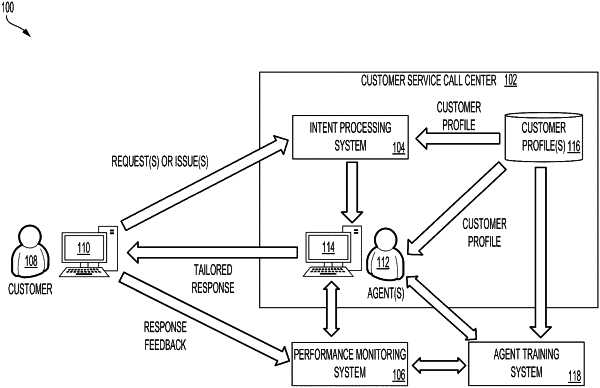| CPC H04M 3/5175 (2013.01) [H04M 3/42221 (2013.01); H04M 2203/401 (2013.01); H04M 2203/403 (2013.01)] | 21 Claims |

|
1. A computer-implemented method comprising:
receiving a request to compare agent performance associated with a set of agents to a target performance corresponding to one or more targets, wherein the set of agents is associated with a client, and wherein the request includes a selection of one or more classifications;
processing conversation data associated with the client, wherein the conversation data corresponds to a set of conversations between users and the set of agents, and wherein the conversation data corresponds to the one or more classifications;
calculating a set of client performance metrics, wherein the set of client performance metrics is calculated based on the conversation data and the agent performance during the set of conversations;
obtaining a set of target performance metrics corresponding to the one or more targets, wherein the set of target performance metrics is obtained using performance data associated with the one or more targets;
generating a comparison of the set of client performance metrics to the set of target performance metrics, wherein the comparison is generated according to the one or more classifications;
using a trained machine learning algorithm to generate one or more recommendations for improving the agent performance, wherein the trained machine learning algorithm uses the set of client performance metrics and the set of target performance metrics as input; and
providing the comparison and the one or more recommendations.
|